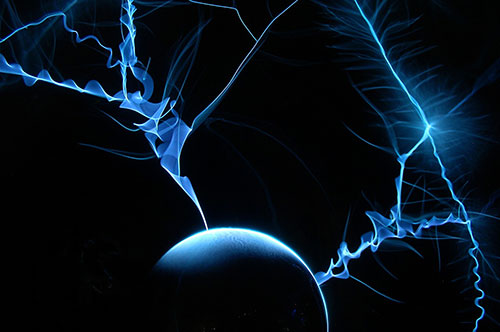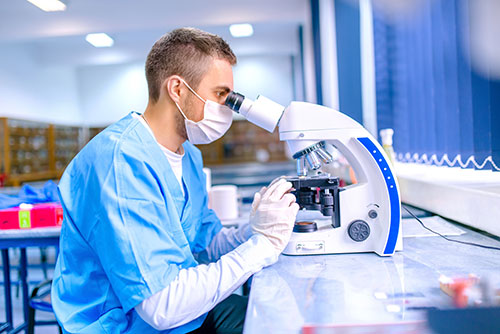Why Precision Water Purity is Non-Negotiable
As an engineer designing or managing laboratory or industrial processes, you understand the critical importance of controlling variables. Water, often perceived as simply H₂O, can be a significant variable if left untreated. Municipal tap water contains a complex mixture of dissolved ions (salts and minerals), organic compounds, particles, and microorganisms that can interfere with sensitive analyses, contaminate cell cultures, cause scaling or corrosion in industrial equipment, or compromise the quality of the final product.
Achieving reliable, repeatable results and ensuring process integrity necessitates water purification. Deionized (DI) water, produced by removing ionic contaminants, is fundamental. However, not all DI water is created equal. Understanding the distinct classifications – Type I (Ultrapure), Type II (General Lab Grade), and Type III (RO Grade) – based on stringent industry standards such as ASTM D1193 and ISO 3696 – is crucial for selecting the appropriate quality for your specific application. This guide provides engineers with a clear comparison of deionized water types, their key specifications, typical applications, and essential system design considerations.
Key Water Purity Parameters & Measurement
Water “purity” is defined by the absence of contaminants. Effective water purification systems target several key culprits:
- Ions: Dissolved inorganic salts and minerals (e.g., Ca²⁺, Mg²⁺, Na⁺, Cl⁻, SO₄²⁻). Measured primarily by resistivity (Megohm-centimeter, MΩ·cm) or its inverse, conductivity (microSiemens/centimeter, µS/cm). Higher resistivity indicates lower ionic content. Note: Resistivity is temperature-dependent, typically standardized at 25°C.
- Organics: Carbon-containing compounds from natural or synthetic sources. Measured as Total Organic Carbon (TOC), often in parts-per-billion (ppb) or µg/L.
- Particulates: Undissolved solids, colloids, and silt. Measured by particle counters or filtration tests.
- Microorganisms: Bacteria, algae. Measured as Colony Forming Units per milliliter (CFU/mL).
- Pyrogens/Endotoxins: Bacterial byproducts causing fever responses. Critical in biomedical applications, measured in Endotoxin Units per milliliter (EU/mL).
International standards organizations, such as ASTM International (ASTM D1193), ISO (ISO 3696), and the Clinical and Laboratory Standards Institute (CLSI), define specific maximum allowable levels for these contaminants to classify water into different types or grades. Understanding these specifications is the first step in selecting the correct type of water.
Type III Water (RO Grade / Basic DI): The Starting Point
- Characteristics: Type III water represents the initial level of laboratory purification. It is typically characterized by a resistivity greater than 0.05 MΩ·cm (equivalent to conductivity less than 20.0 µS/cm) at 25°C. While significantly purer than tap water, it still contains moderate levels of ions and organics, with total organic carbon (TOC) levels generally below 200 ppb. Bacterial limits are often not specified for this grade, though levels are reduced compared to feedwater. Standard production methods include single-pass Reverse Osmosis (RO) or basic Ion Exchange (DI).
- Applications: Suitable for non-critical tasks where moderate ionic/organic content is acceptable:
- Initial glassware rinsing, followed by a higher-purity rinse.
- Feedwater for laboratory autoclaves, humidifiers, and water baths (reduces scale buildup).
- Essential feedwater for Type I or Type II water purification systems, acting as a crucial pre-treatment step.
- Limitations: Unsuitable for analytical work, buffer/reagent preparation, or cell culture due to remaining contaminants.
Type II Water (General Laboratory Grade): The Versatile Workhorse
- Characteristics: Type II water offers a significant improvement in purity, suitable for a wide range of applications. It is defined by a resistivity greater than 1.0 MΩ·cm (conductivity < 1.0 µS/cm) at 25°C. Stringent controls are also in place for organic and microbial contamination, with TOC levels typically below 50 ppb and heterotrophic bacteria counts below 100 CFU/mL. Production often involves a combination, such as RO followed by DI or Electrodeionization (EDI), frequently incorporating UV irradiation (typically at 254 nm) for microbial control.
- Applications: Ideal for many standard laboratory tasks requiring high ionic purity but not the absolute maximum:
- Preparation of buffers, pH solutions, and microbiological culture media.
- General chemistry, titrations, and spectrophotometry.
- Feedwater for clinical analyzers and Type I polishing systems.
- General reagent preparation for non-critical assays.
- Advantages: Strikes an excellent balance between purity level and the cost of production and system operation, making it a staple in many labs.
Type I Water (Ultrapure): The Apex of Purity
- Characteristics: Type I water, also known as ultrapure water, meets the most stringent specifications. Its defining feature is extremely high ionic purity, with resistivity approaching the theoretical maximum of 18.2 MΩ·cm at 25°C (conductivity of less than 0.056 µS/cm). It demands exceptionally low organic contamination (TOC typically < 10 ppb, although standards allow up to 50 ppb) and minimal microbial presence (bacteria often < 0.1 CFU/mL, with a standard of < 1 CFU/mL). When used in life science applications, endotoxin levels are often controlled to be less than 0.03 EU/mL through ultrafiltration. Achieving this requires a multi-stage system: typically RO, primary DI/EDI, UV photo-oxidation (using 185 nm wavelength for TOC reduction and 254 nm for sterilization), polishing mixed-bed ion exchange, and often terminal Ultrafiltration (UF).
- Applications: Essential for the most sensitive and critical applications where trace contaminants could invalidate results:
- Advanced analytical techniques: High-Performance Liquid Chromatography (HPLC), Gas Chromatography-Mass Spectrometry (GC-MS), Inductively Coupled Plasma Mass Spectrometry (ICP-MS), ICP-Optical Emission Spectrometry (ICP-OES), Atomic Absorption (AA).
- Molecular biology and genomics: Polymerase Chain Reaction (PCR), DNA sequencing, electrophoresis.
- Life sciences: Mammalian cell and tissue culture, in vitro fertilization (IVF).
- Semiconductor manufacturing and critical electronics rinsing processes.
- Key Consideration: Due to its extreme purity, Type I water is highly reactive and readily absorbs atmospheric CO₂, which lowers its resistivity and leaches contaminants from storage containers. It must be produced fresh at the point of use via a dedicated polishing system.
Beyond the Lab: High Purity & Deionized Water in Industrial Processes
The principles of water purity extend critically into industrial settings, often on a much larger scale. While lab classifications (I, II, III) provide a framework, industrial applications frequently reference specific standards (e.g., USP, SEMI) and focus on reliability and cost-effective bulk production. Key industrial needs include:
- Power Generation: Ultrapure boiler feedwater, often exceeding Type II specifications for ionic purity and silica control, prevents scale and corrosion, ensuring turbine efficiency and safety.
- Pharmaceuticals: Requires water meeting stringent USP Purified Water or Water for Injection (WFI) standards, which demand rigorous, validated control over ions, total organic carbon (TOC), microbes, and endotoxins.
- Semiconductors & Electronics: Manufacturing necessitates ultrapure water (often exceeding Type I specs, sometimes defined by SEMI standards) for critical rinsing steps to prevent yield loss from microscopic particle or ionic contamination.
- Food & Beverage: Consistent water quality is crucial for product taste, stability, and safety, often requiring specific treatment to remove chlorine and other impurities.
- Chemical Manufacturing: Ensures predictable reaction kinetics, prevents unwanted side products, and maintains catalyst integrity.
Designing Industrial Water Deionizer Systems involves robust technologies capable of handling high volumes, variable feedwater quality, and providing consistent output, all with the aid of sophisticated automation, monitoring, and control systems.
Choosing Your DI Water System: Key Design & Selection Factors for Engineers
Selecting the right water purification system requires careful consideration:
- Application Sensitivity: Critically assess the required water purity based on your process’s tolerance to specific contaminants (ions, organics, bacteria, and endotoxins). Match this to the appropriate water type (I, II, or III). Over-specifying increases capital and operational costs unnecessarily.
- Governing Standards: Identify mandatory standards (ASTM, ISO, USP, SEMI, CLSI) for your application or industry and ensure the system can meet and maintain compliance.
- Feedwater Analysis: Obtain a comprehensive analysis of your source water quality, including TDS, hardness, chlorine/chloramine, silica, TOC, and SDI. This determines the necessary pre-treatment (e.g., softening, carbon filtration, microfiltration) and the selection of core purification technology (RO, EDI, DI).
- Volume & Flow Rate: Determine average daily usage, peak demand requirements (instantaneous flow), and necessary flow rates (L/min or GPM) to size the system, storage tanks (if applicable), and distribution pump appropriately.
- Distribution & Point-of-Use: Plan the distribution loop design, considering materials compatibility and potential for contamination. Remember, Type I requires point-of-use generation and polishing. Type II/III can sometimes be stored, but storage tank design (conical bottom, vent filtration, UV) is critical to prevent degradation.
- Monitoring & Validation: Specify necessary online monitoring (resistivity, TOC meters) with appropriate alarming. Regulated industries, such as pharma and clinical, require formal system validation protocols (IQ/OQ/PQ).
- Operating Costs & Maintenance: Factor in the total cost of ownership, including the lifespan of consumables and replacement costs (pre-filters, RO membranes, DI resin/EDI modules, UV lamps, and final filters), energy consumption, water usage (reject water from RO), and routine maintenance schedules.
- Footprint & Utilities: Ensure adequate physical space for the system components, required electrical power supply, drain access for reject water and regeneration waste (if applicable), and sufficient incoming water pressure and flow.
Your Partner for Reliable Water Purity: UltraPure Systems
Navigating water purity standards and selecting the optimal purification technology demands expertise. At UltraPure Systems, we specialize in designing, building, and supporting high-performance laboratory water systems and industrial water deionizer solutions tailored to your exact specifications. Based in the USA, we understand the critical role that consistent water quality plays, whether you need Type I ultrapure water for sensitive analytics or large volumes of high-purity process water that meets industrial standards like USP or SEMI.
Don’t let inconsistent water quality compromise your results or processes—partner with experts who can deliver reliable, cost-effective purification solutions designed for your specific engineering requirements.
Ready to ensure the right water purity for your needs? Contact UltraPure Systems today for a personalized consultation on your laboratory or industrial water system requirements. Send us a message or give us a call!

